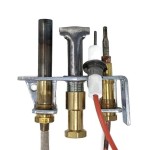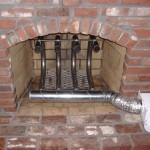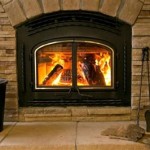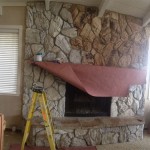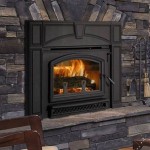Mounting a TV Above a Fireplace and Hiding the Wires: A Comprehensive Guide
Mounting a television above a fireplace has become a popular design choice in many homes, offering a visually appealing focal point and saving space. However, this installation presents unique challenges, especially when it comes to managing and concealing the unsightly wires that power and connect the television to various peripherals. Successfully hiding these wires is crucial for achieving a clean and professional aesthetic, enhancing the overall viewing experience and maintaining the integrity of the room's décor.
This article will explore the essential steps and considerations involved in mounting a TV above a fireplace and effectively concealing the associated wires. From pre-installation planning to choosing the right mounting hardware and wire concealment methods, this guide provides a comprehensive overview to help homeowners achieve a seamless and aesthetically pleasing installation.
Key Point 1: Pre-Installation Planning and Safety Considerations
Before commencing any installation, a thorough assessment of the fireplace and surrounding area is paramount. This involves evaluating the fireplace type (gas, electric, or wood-burning), the structural integrity of the wall above the fireplace, and the potential heat exposure to the television. Wood-burning fireplaces, in particular, generate significant heat that can damage electronic components, potentially shortening the lifespan of the television. Gas fireplaces also produce heat, though typically less than wood-burning ones. Electric fireplaces generate relatively little heat, making them a more suitable option for TV mounting.
It is critical to determine the wall’s material (drywall, brick, stone, or some combination) as this will dictate the type of mounting hardware required. Brick and stone walls necessitate specialized anchors and drilling techniques compared to drywall. Furthermore, locate any electrical wiring, plumbing, or gas lines within the wall before drilling to avoid causing damage or creating a hazardous situation. Employ a stud finder or consult with a professional to identify these hidden utilities accurately.
Calculate the ideal viewing height for the television. Mounting the TV too high can lead to neck strain and an uncomfortable viewing experience. As a general guideline, the center of the television screen should be at eye level when seated. This measurement will influence the placement of the TV mount and the subsequent wire concealment strategy. Consider the size and viewing angle of the television when making this determination.
Ensure the chosen TV mount is compatible with the television's VESA (Video Electronics Standards Association) mounting pattern and weight. VESA specifies the standard mounting hole pattern on the back of TVs. Select a mount that is rated to support the weight of the TV, with some margin for safety. Different types of mounts are available, including fixed mounts, tilting mounts, and full-motion mounts. The choice depends on the desired viewing flexibility and accessibility to the back of the TV for wiring.
Safety precautions are of utmost importance. Disconnect the electricity to the circuit breaker serving the fireplace area before commencing any electrical work. Wear appropriate safety gear, including eye protection and gloves. If unfamiliar with electrical wiring or structural work, consult with a qualified electrician or contractor.
Key Point 2: Selecting and Installing the Appropriate Concealment Method
Several methods can be employed to conceal the wires associated with a TV mounted above a fireplace. The choice depends on the wall construction, the desired level of concealment, and the homeowner’s comfort level with DIY projects. The most common methods include using wire channels, in-wall wiring kits, and conduit.
Wire channels, also known as cable raceways or cord covers, are surface-mounted plastic or metal channels that run along the wall, concealing the wires within. These channels are relatively easy to install, typically attaching to the wall with adhesive backing or screws. They are available in various sizes and colors to blend in with the wall décor. Wire channels are a suitable option for concealing wires on drywall or when in-wall wiring is not feasible or desirable.
In-wall wiring kits offer a more discreet solution by running the wires behind the wall. These kits typically include a power bridge (or power inlet/outlet) and low-voltage wiring for connecting the TV to peripherals such as cable boxes, game consoles, and streaming devices. The power bridge allows for safely extending the electrical circuit within the wall without violating building codes. Installing an in-wall wiring kit involves cutting holes in the wall behind the TV and near the floor or electrical outlet, running the wires between the holes, and connecting the power bridge. This method requires some familiarity with electrical wiring and wall construction. Verify local building codes permit this type of modification before proceeding, and if unsure, consult a qualified electrician.
Conduit, typically metal or PVC piping, provides a robust and protective option for concealing wires. Conduit is often used in commercial settings but can also be employed in residential installations, particularly when running wires through unfinished basements or attics. Conduit offers excellent protection against physical damage and is resistant to moisture and pests. Installing conduit requires specialized tools and expertise, so it is generally recommended to hire a professional electrician for this task.
Regardless of the chosen method, ensure that all wires are properly secured and organized to prevent them from becoming tangled or damaged. Use cable ties or Velcro straps to bundle the wires together. Avoid running wires across sharp edges or near heat sources. Leave some slack in the wires to allow for movement and adjustments. Follow all manufacturer's instructions for the chosen concealment method.
Key Point 3: Addressing Heat Concerns and Ventilation
As previously mentioned, heat is a significant concern when mounting a TV above a fireplace. Excessive heat can damage the television's internal components, leading to premature failure. To mitigate this risk, several measures can be taken to improve ventilation and reduce heat exposure.
Consider installing a heat shield above the fireplace, especially if it is a wood-burning fireplace. A heat shield is a non-combustible barrier that deflects heat away from the television. Heat shields can be made from metal, ceramic, or other heat-resistant materials. Ensure the heat shield is properly sized and installed to provide adequate protection.
Increase ventilation around the television. Ensure there is sufficient space between the back of the TV and the wall to allow for airflow. Avoid blocking the ventilation openings on the TV. Consider installing a small fan behind the TV to circulate air and dissipate heat. Some TV mounts are designed with built-in ventilation features.
Regularly monitor the temperature around the television. Use a thermometer to check the temperature of the wall above the fireplace and the air around the TV. If the temperature exceeds the television's recommended operating range, take steps to reduce the heat exposure. This might involve adjusting the fireplace usage, installing a more effective heat shield, or improving ventilation.
Consider alternative TV placement options if heat concerns cannot be adequately addressed. Mounting the TV on an adjacent wall or using a different room layout may be a more practical solution. Weigh the aesthetic benefits of mounting the TV above the fireplace against the potential risks to the television's longevity and performance.
Following these guidelines ensures a visually appealing and safe installation of a television above a fireplace, effectively concealing wires and mitigating potential heat-related issues. Thorough planning, careful execution, and adherence to safety precautions are crucial for achieving a professional and long-lasting result.

Tv Wall Mount Installation With Wire Concealment Over Fireplace

How To Hide Tv Wires Above A Fireplace When You Can T Go Through The Wall Homes I Have Made

How To Hide Tv Wires Above A Fireplace When You Can T Go Through The Wall Homes I Have Made

Hide Cords Of A Tv Mounted Over Fireplace Powerbridge

How To Hide Cable Wires When Mounting Tv Over Fireplace Hometalk

How To Mount A Tv Over Brick Fireplace And Hide The Wires Designing Vibes Interior Design Diy Lifestyle

Tv Wall Mount Installation With Wire Concealment Over Fireplace

Hiding Wires For A Tv Above Fireplace Extension Kit Powerbridge Mount Over Mounted

How To Hide Tv Wires Above A Fireplace When You Can T Go Through The Wall Homes I Have Made

Tv Wall Mount Installation With Wire Concealment Over Fireplace

